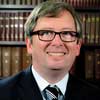Science and the Practical Business of Making Food
PRESIDENT’S MESSAGE
Expert knowledge about how to obtain food from the natural world is as old as humanity. In prehistoric times, we can imagine expertise was held within family groups or tribes and was extremely locally relevant. With the development of agriculture came the formation of cities and a growing proportion of the population not immediately concerned with growing or preparing food. This social change required additional technologies and more specialized skills of food preservation, transportation, and distribution, such as how to salt cod, how to sanitize wine amphorae with sulfur dioxide, or how to grind grains.
The people doing this work were as smart and as motivated as we are today, and new technologies and approaches emerged constantly as they engaged with the practical challenges they faced. Even today, many of us can point to processes in our work that arose not from high-level strategy but from an experienced employee paying close attention and thinking, “I could do this better.” We should never undervalue this form of expertise.
However, the modern era is one of science. In the 18th and 19th centuries, traditional ways of doing things were challenged not only by trial-and-error tinkering but increasingly by attempts to use organized observation and experimentation as well as appeals to universal scientific laws. Many of the very first scientists took food as the object of their study even though they did not think of themselves as “food scientists.” We could point to the German chemist Frederick Accum working in London in the 1820s as a prototype of the food chemist. Accum used qualitative tests to identify food adulterants ranging from the dishonest but harmless (e.g., staining starch in cream with iodine) to the positively dangerous (e.g., detecting red lead in cayenne pepper by reaction with hydrogen sulfide). The prototypical food microbiologist would, of course, be Pasteur, who used scientific method to understand and improve the practical innovations of Nicolas Appert. A generation later, Samuel Cate Prescott, the first president of IFT and a microbiologist at MIT, worked with William Underwood, a local canner, on the mundane but important business of spoilage in canned clams. Their collaboration led to a profound understanding of spore-forming organisms and the development of the retorting process. The genius of these pioneers was their capacity to apply the powerful, general ideas of science to the specific problems faced in food processing. They didn’t replace the “tinkerers” of yesteryear but rather used the tools of science to be more effective and to make their innovations more general.
If the application of science to food is as old as our idea of science, then where does the idea of the “food scientist” come from? Probably with the formation of the Institute of Food Technologists in 1939. The founders’ preference for the word “technologist” rather than “scientist” is interesting and perhaps reflects their healthy respect for the practical business of making food and the great tradition of “tinkering.” Indeed, the minutes of that inaugural meeting in Cambridge, Mass., show an organization not seeking to represent purely academic science but rather a range of food expertise including the following: “University Research and Teaching, Editorial, Canning, Meats, Government Research, Executive in Food Distribution, Production Manager, Sanitation and Public Health, Dairying, and Experiment Station Work.”
Academic food science departments followed later and, despite the fact MIT was the first (led again by Dr. Prescott), they found their initial homes in the United States in the agriculture schools of the land-grant colleges. Just as great food science is never disconnected with the practical challenges of making wholesome food, the land grants were conceived not as ivory towers interested in knowledge for its own sake, but rather to be intimately concerned with the needs of their areas and the effective adoption of new technologies. More recently, other types of universities have developed successful food science programs. As IFT president, I’ve enjoyed meeting faculty from these schools and seeing firsthand how they develop innovative teaching and research programs to meet the needs of both their students and their regions.
At its foundation, in its professional society, and in its modern educational and research programs, great food science is always applied science. Great food scientists see the fundamental principles of science involved in real practical problems and use their studies to solve the problems and advance the science.
Food science has a long and distinguished history, and the challenges in the current food system mean we will need all our skills going forward. As members of IFT, we are committed to confronting these challenges and to working toward a future where food science and technology is generally accepted as providing solutions to these global challenges.
 John Coupland, PhD, CFS
John Coupland, PhD, CFS
IFT President, 2016–2017
Professor of Food Science, Pennsylvania State University, University Park, Pa.
[email protected]
@JohnNCoupland


